Here's Who Made Gartner's 2018 Magic Quadrant For Mobile App Development Platforms
Top Products For Enterprise Mobile App Development
Businesses of all sizes continue to look for faster (and lower-cost) methods for their mobile app development projects, spanning B2B, consumer-facing and internal apps. Methods for rapid development of apps -- including low- and no-code methods -- remain a growing focus in 2018, as do the availability of back-end services for simplified development, according to technology research firm Gartner. Meanwhile, newer functionality is beginning to emerge in some platforms for supporting wearables and immersive devices such as augmented reality headsets, Gartner reported.
Gartner recently released its 2018 Magic Quadrant For Mobile App Development Platforms, and we went through the report to highlight some of the key findings. What follows are the details on the 19 vendors that made this year's ranking.
Kony: Leader
What it offers: Kony, a longtime mobile app development platform player, has continued to grow its offering in the realm of web app development, adding capabilities for high productivity application development. The company offers a front-end IDE (the Kony Visualizer), back-end services (the Kony Fabric) and a multichannel engine (the Kony Nitro Engine).
Strengths: Kony provides "one of the most comprehensive cross-platform development environments," Gartner said, and customers report "above average overall satisfaction." The company's back-end services are also highly competitive across both web and mobile development. New capabilities added by Kony include AI-driven functions.
Cautions: Kony has "struggled" with some of its reseller partnerships, such as with Cognizant, in the past. To increase growth significantly, the company "must overcome this problem and refocus on partnerships with regional system integrators and OEMs/resellers," Gartner said.
Mendix: Leader
What it offers: Mendix's platform is focused on high-productivity, model-driven development. The company's Web Modeler tool provides visual development of basic apps, while the Desktop Modeler provides an IDE and serves the needs of professional developers. Mendix has been expanding from its traditional base of SMB customers to serve a growing number of enterprises.
Strengths: An OEM agreement with SAP and a partnership with IBM have aided Mendix's growth, and the company's mobile app development platform and road map "demonstrate that it understands large organizations' requirements for multi-experience apps and developer personas," Gartner said. The company is also strong in terms of its support for app life-cycle management and DevOps capabilities.
Cautions: Despite strong growth and renewal rates, Mendix received a "below average" rating from customers surveyed by Gartner. Issues cited shortfalls in customer service and support, and in developer training and support as well, Gartner said.

Microsoft: Leader
What it offers: Microsoft provides solutions to meet a variety of app development needs. Xamarin is a "staple" of Microsoft's offering for professional developers, and use of it has "increased significantly" since Microsoft acquired it in 2016, Gartner said. Meanwhile, a large number of enterprises use Microsoft's high-productivity tool, PowerApps. Meanwhile, back-end services have seen an expansion with the further advancement of the Azure Platform as a Service, which includes functionality tailored to mobile.
Strengths: Enterprise interest in Microsoft for mobile app development has grown "drastically" since the addition of Xamarin, and Microsoft is "investing heavily" in mobile app development tools, according to Gartner. Investments in Azure back-end services that focus on mobile development are also paying dividends. Customers expressed "above-average" overall satisfaction with Microsoft, compared to other Magic Quadrant vendors, Gartner said.
Cautions: Microsoft's licensing models "can be complex," with the company's mobile app development platform spanning "many different tools that are often licensed differently," Gartner said. Meanwhile, PowerApps "lacks tight integration" with Microsoft's own tools for professional developers, Gartner reported.
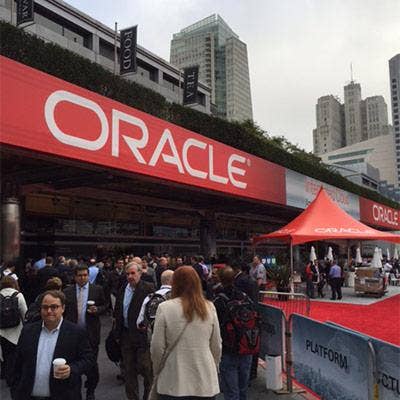
Oracle: Leader
What it offers: Oracle provides the Mobile Cloud Enterprise featuring the Mobile Application Accelerator for high-productivity development. Developers can use the tool with Oracle's web app development offering, the Visual Builder Cloud Service. Along with mobile and web apps, the Mobile Cloud Enterprise platform supports development of chatbots, and support for AR apps is expected in the near future.
Strengths: Oracle has continued expanding its mobile app development platform to support multi-experience development, including increased connectivity with DevOps, analytics and bot frameworks. The moves demonstrate Oracle's grasp of "how important building multi-experience apps will be to businesses" in coming years, Gartner said. Oracle also "has the resources, road map and commitment" to compete with its mobile app development platform in numerous industries, Gartner noted.
Cautions: Oracle depends on third-party Apache Cordova plugins for support of APIs for native operating systems. Developers must often supplement with native iOS and Android development tools, or to frameworks that cut across platforms, like Xamarin. In addition, Oracle "has sometimes not been timely" in meeting its product plans, Gartner said.
OutSystems: Leader
What it offers: OutSystems focuses on high-productivity development across a range of touchpoints--including mobile, web, email, chat, voice service and SMS. The company's platform offers a visual modeling approach to developing a user interface, as well as data synchronization, logic and back-end integration. The visual models can be expanded upon using CSS, JavaScript, Hava and a range of other languages. Most paying customers for the OutSystems platform are SMBs.
Strengths: Customers surveyed by Gartner reported that the OutSystems platform is "easy to use, with a short learning curve." The platform is also useful for mobile websites and portals, in addition to the creation of mobile apps, Gartner noted. Recent innovations have included analytics for measuring the outcome of app development on their business strategy, which makes use of artificial intelligence.
Cautions: Some customers told Gartner that OutSystems has a licensing scheme that is "initially hard to understand." The platform is also missing certain deployment features, according to some customers that spoke with Gartner; for instance, the software lacks capabilities for generating app-native code for varying platforms and versions.
Pega: Visionary
What it offers: Pega provides tools for high productivity as well as professional developers in its Pega Infinity platform. Offerings include a no-code tool for building apps (Designer Studio), which provides custom code options with JavaScript, as well as platform services aimed at multi-experience development.
Strengths: Upgrades to Pega's platform have included the addition of design tools for multi-experience apps, native bot framework, native AI and core conversational UI APIs. The platform's features "enable developers to design continuous customer experiences," Gartner said.
Cautions: Pega's professional services received "lower than average satisfaction" from customers that spoke with Gartner. Lengthy time to deployment was one trouble spot mentioned by customers. Pega also has fewer customers than most other vendors in the mobile app development platform market, and "Pega's prices tend to be at the high end for this market," Gartner said.
Progress: Visionary
What it offers: The Progress platform has changed its focus to NativeScript, the company's open-source framework for both iOS and Android app development. Previously, Progress had focused on using Apache Cordova for enabling hybrid app development. Progress also acquired mobile back-end services provider Kinvey in 2017. Most of its paying customers are SMBs. Progress moved from the Leader quadrant in the 2017 Gartner ranking into the Visionary quadrant this year.
Strengths: The acquisition of mobile back-end services provider Kinvey in 2017 has augmented the Progress platform. The company is also "in a strong position" to capitalize on cross-platform growth thanks to its creation of (and contributions to) the NativeScript framework, according to Gartner. NativeScript overall is a "solid JavaScript-based framework" for developing iOS and Android apps leveraging native operating system APIs, Gartner said.
Cautions: Progress' new tool for low-code development, NativeScript Sidekick, is "unproven and immature" compared to those of other popular app development platforms, Gartner said.
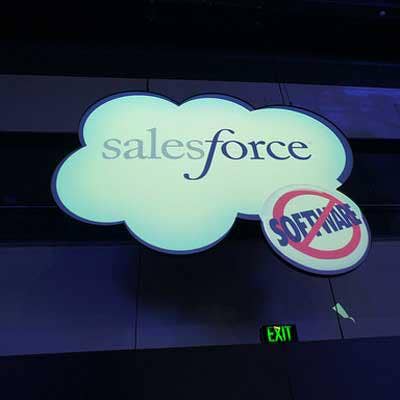
Salesforce: Visionary
What it offers: Salesforce focuses on the development of mobile and web apps using its Lightning App Builder, which can use JavaScript- and XML-built components. Salesforce provides professional developers with Salesforce Mobile SDKs and with access to frameworks for building apps to run across platforms. Salesforce moved from the Leader quadrant in the 2017 Gartner ranking into the Visionary quadrant this year.
Strengths: Customers that spoke with Gartner reported "one of the highest levels of overall satisfaction" with Salesforce's mobile app development platform. The platform received high scores for areas including software licensing, support and developer training.
Cautions: Most Salesforce mobile app development platform customers also use Salesforce enterprise applications, and the company's business model "may not give it the best chance of growing strongly as a stand-alone MADP," Gartner said.
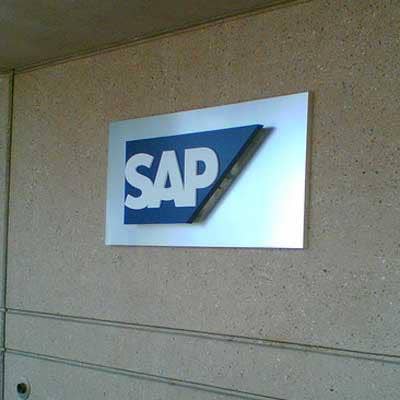
SAP: Visionary
What it offers: SAP has improved its capabilities as a "compelling stand-alone, general-purpose MADP" thanks to its agreement with Mendix. Technologies used in SAP's platform include app templates, native and hybrid SDKs and model-driven app creation. SAP moved from the Niche quadrant in the 2017 Gartner ranking into the Visionary quadrant this year.
Strengths: SAP's investments in mobile and "strong" SDK solutions "demonstrate continued commitment to deliver comprehensive mobile development tools," Gartner said. The company also offers a "broad range" of connectors into both SAP and third-party systems, according to Gartner, and the agreement with Mendix "fills a significant gap" in its high-productivity capabilities.
Cautions: SAP has moved from its SAP Mobile Platform to offering mobile app development capabilities as components inside the SAP Cloud Platform. "This is confusing for customers," Gartner said. The way that many enterprises view SAP's mobile platform "indicates a poor and disjointed mobile development value proposition," Gartner added.
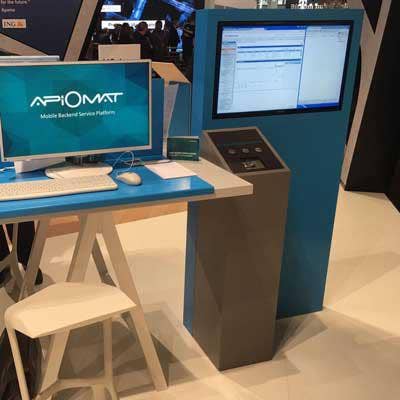
ApiOmat: Niche
What it offers: ApiOmat provides back-end-as-a-service that allows for faster creation of mobile, web and smartwatch apps. A key focus for the platform is on connecting to enterprise IT systems, including legacy tools, cloud systems and Internet of Things devices. ApiOmat SDKs can also be used in developing solutions for augmented/virtual reality headsets, voice assistants and chatbots. ApiOmat is new to Gartner's Magic Quadrant this year.
Strengths: Gartner reports that the ApiOmat platform is strong in the realm of its core back-end services, which enables the creation of custom logic via ApiOmat's module system. The modules can integrate other APIs and systems, and ultimately can be used to develop complex data orchestrations.
Cautions: ApiOmat has less than 40 paying customers and a small partner network as well, meaning that there is minimal interest in developing new modules for the ApiOmat ecosystem. ApiOmat is also early in enabling the development of decentralized apps on a blockchain, but Gartner notes that blockchain technologies still remain unproven for production-ready projects at this stage.
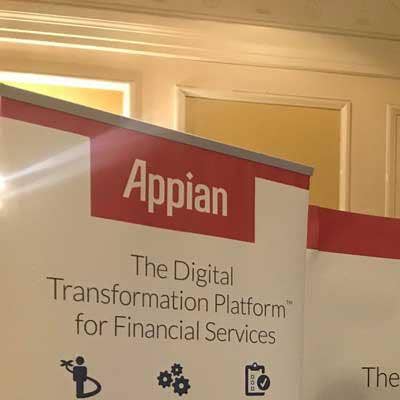
Appian: Niche
What it offers: Appian's platform, which is aimed at high-productivity uses, differentiates through the company's business process management background and is focused on the development of employee-facing apps. The company offers model-driven app development through its web-based integrated development environment. Its Appian Self-Assembling Interface Layer is used as a framework for rendering apps across different channels, and mobile back-end services are accessed via web APIs.
Strengths: According to Gartner, pricing is a key advantage: Customers have reported "above average" satisfaction with software licensing from Appian thanks to the inclusion of mobile licensing within the broader Appian platform license. Another major plus is that Appian's model-driven IDE provides templates and components for reuse of work.
Cautions: Appian doesn't support leading third-party frameworks for mobile development, such as Xamarin and Apache Cordova, Gartner said. Appian's IDE also doesn't allow for the creation of fully customized mobile app binaries, which makes the platform unsuitable for developing apps that will appear in public app stores.
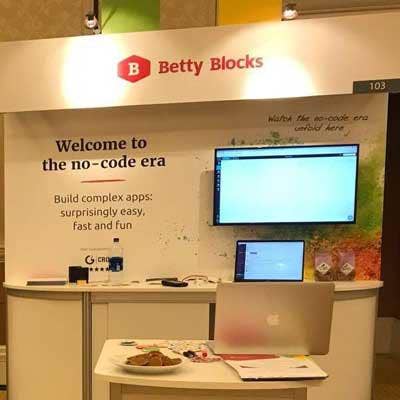
Betty Blocks: Niche
What it offers: The Betty Blocks platform provides a web-based IDE and focuses app building using drag-and-drop capabilities. The platform is cloud native and runs on the company's own cloud, though it can also run on AWS or in private clouds using Docker containers. Betty Blocks, which specializes in serving SMBs and departments within enterprises, is new to Gartner's Magic Quadrant this year.
Strengths: Gartner points to the no-code tool at Betty Blocks as a key capability, allowing for an "intuitive" approach to app building using visual modeling. The capability helps to provide fast app deployments and customers report "above average" satisfaction, according to Gartner.
Cautions: The platform's mobile back-end services are "immature," Gartner said, with a lack of native push notification and limited options for offline data synchronization.
DSI: Niche
What it offers: DSI provides a mobile app development platform that is primarily aimed at supply chain organizations. The platform provides a web-based IDE with drag-and-drop functionality, as well as mechanisms for development of more-complicated app experiences. While the focus is on development of mobile and web apps, the DSI platform has some capabilities to aid development for wearables and chatbots. DSI moved from the Challenger quadrant in the 2017 Gartner ranking into the Niche quadrant this year.
Strengths: DSI's viability is a major plus, as the company is privately owned, has a large base of customers and has been profitable for 15 years. The company has also excelled at strategically pursuing supply chain use cases, and has improved its offering through aggressive R&D investing.
Cautions: The company's focus on the supply chain sector means the DSI platform is "not a good choice for broader use cases," Gartner said, and DSI has demonstrated a comparatively low rate of customer acquisition growth.
GeneXus: Niche
What it offers: GeneXus' platform focuses on providing low-code approaches app development, and most of its paying customers are SMBs. The majority of the company's licensing revenue comes from partners. The platform enables the creation of native code for iOS and Android apps, and it can be deployed on-premises or on cloud services. GeneXus moved from the Challenger quadrant in the 2017 Gartner ranking into the Niche quadrant this year.
Strengths: GeneXus is highly viable, as it's been around for 30 years and boasts strong customer retention. The platform's pricing plan is also straightforward, according to Gartner.
Cautions: GeneXus has not been seeing growth at the same degree as many other vendors in this year's Magic Quadrant ranking. The company also has a relatively small number of engineers and employees overall, Gartner noted.
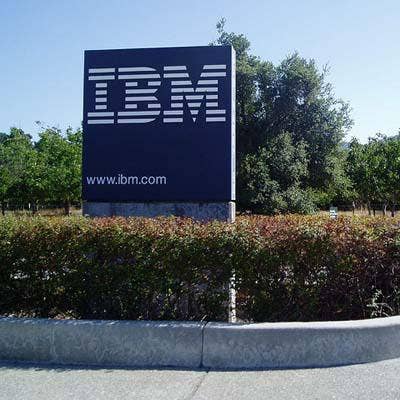
IBM: Niche
What it offers: IBM offers an on-premises offering for mobile app development (the IBM Mobile Foundation) as well as a cloud-native offering (IBM Mobile Services on IBM Cloud). The IBM Mobile Foundation provides an IDE for designing mobile apps and generating hybrid apps using Apache Cordova, which are based on JQuery. IBM has been refocusing its platforms on providing mobile back-end services. IBM moved from the Challenger quadrant in the 2017 Gartner ranking into the Niche quadrant this year.
Strengths: IBM's back-end services received very high scores in Gartner's Magic Quadrant survey, while security is seen as another strong point. IBM's tools for enabling professional developers are a highlight, as well, with many SDKs available to use in the IDE of the developer's choosing.
Cautions: IBM has caused some confusion about its mobile strategy by moving away from its MobileFirst branding. IBM's tools also don't offer high-productivity development and low-code approaches, meaning that customers must make an additional purchase to access those sorts of tools.
i-exceed: Niche
What it offers: The i-exceed platform is focused on high-productivity development, with a cloud environment for building iOS and Android apps. The platform enables creation of app binary files on a user's computer, and supports front-end development work with JavaScript.
Strengths: Gartner reports that i-exceed enjoys "above average" user satisfaction with developer training and support. The company's platform also uses a "multitier microapp-based architecture" to split up the development process into building blocks, Gartner said, lowering the time needed for development and testing.
Cautions: Nearly all of i-exceed's customers are in the financial services industry, and its platform has been honed to mostly suit the needs of these customers.
MobileFrame: Niche
What it offers: MobileFrame's platform focuses on drag-and-drop methods for creating mobile apps, and uses native runtime app containers. The platform serves not just iOS and Android, but also Windows devices. While running the platform in the cloud is an option, most customers deploy it on-premises.
Strengths: Customers gave an "above average" rating to MobileFrame's ability to use no-code development not just for front-end work, but also for back-end API creation and data binding, Gartner said.
Cautions: Overall, however, Gartner reported that customers gave "below average" overall satisfaction to the MobileFrame platform. Service and support, professional services, and developer training/support saw below average satisfaction ratings, Gartner said--before noting that MobileFrame "does have many long-standing, satisfied customers."
Red Hat: Niche
What it offers: Red Hat's Mobile Application Platform is integrated with the company's Kubernetes platform, OpenShift, and provides drag-and-drop, no-code capabilities. The platform's Build Farm cloud offering, meanwhile, offers generation of iOS and Android binaries for Xamarin, Apache Cordova and native app projects.
Strengths: Red Hat's Build Farm offering includes mobile back-end services based on Node.js and leveraging OpenShift, which "enables scalability and reuse," Gartner said. The Red Hat platform also offers easier app development with features such as API Mapper, for point-and-click interacting with APIs, and has "robust support" for DevOps.
Cautions: Customers using Red Hat's platform must manage third-party components themselves, since Red Hat doesn't offer a "curated marketplace" like many other vendors, Gartner said. Red Hat has also "not made any significant progress in differentiating its offering in terms of adding advanced capabilities," according to Gartner.

Resco: Niche
What it offers: Resco's platform focuses on high-productivity app development "for any mobile device," Gartner said, including phones, tablets, PCs, wearables and smart glasses. The platform provides low-code capabilities using JavaScript and leverages Xamarin for creating native apps. Resco is new to Gartner's Magic Quadrant this year.
Strengths: Resco enjoys a broad base of customers, with particular popularity among organizations focused on the Microsoft ecosystem. The platform offers "prebuilt connectors" for Dynamics 365, leverages Xamarin for the client runtime and supports both Windows 10 and Windows 7.
Cautions: Resco "does not offer API mediation capabilities" and doesn't support NoSQL or storage of unstructured data, Gartner said. Lack of support for virtual assistants and chatbots is another major issue, according to Gartner.